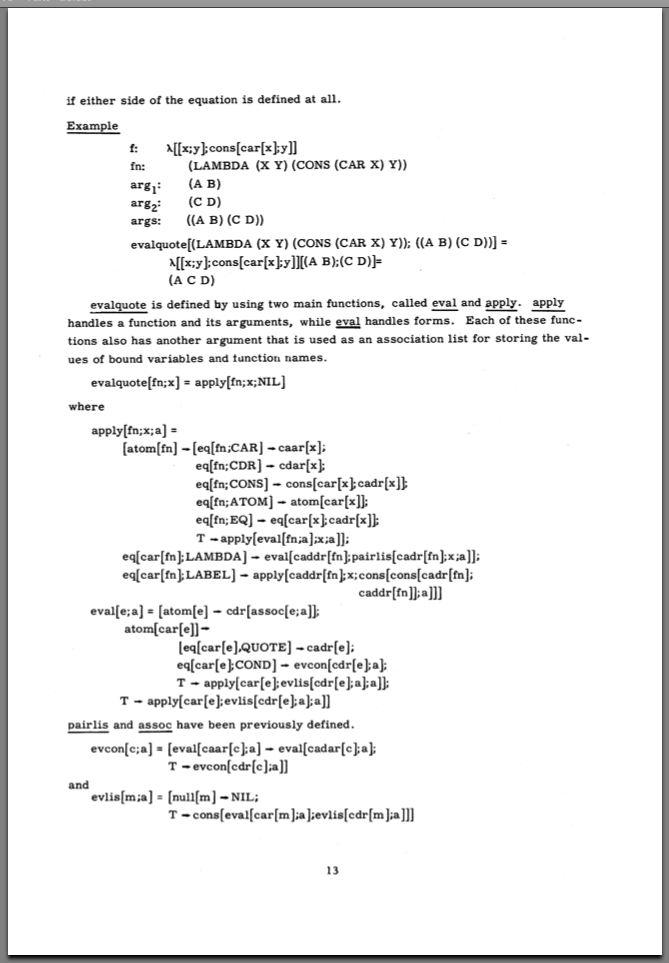
Functions of Symbolic Expressions
and Their Computation by Machine,
Part I"
courtesy of Classic Programmer Paintings

|
|
Functions of Symbolic Expressions and Their Computation by Machine, Part I" courtesy of Classic Programmer Paintings |
This got deeper if one was aware of how Lisp 1.5 had been implemented with the possibility of late bound parameter evaluation ...Kay mentions Lisp, and especially Lisp 1.5, often whenever he is talking about the great ideas of computing. He sometimes likens McCarthy's universal Lisp interpreter to Maxwell's equations in physics -- a small, simple set of equations that capture a huge amount of understanding and enable a new way of thinking. Late-bound evaluation of parameters is one of the neat ideas you can find embedded in that code. The idea of a universal Lisp interpreter is pretty simple: McCarthy defined the features of Lisp in terms of the language features themselves. The interpreter consists of two main procedures:
